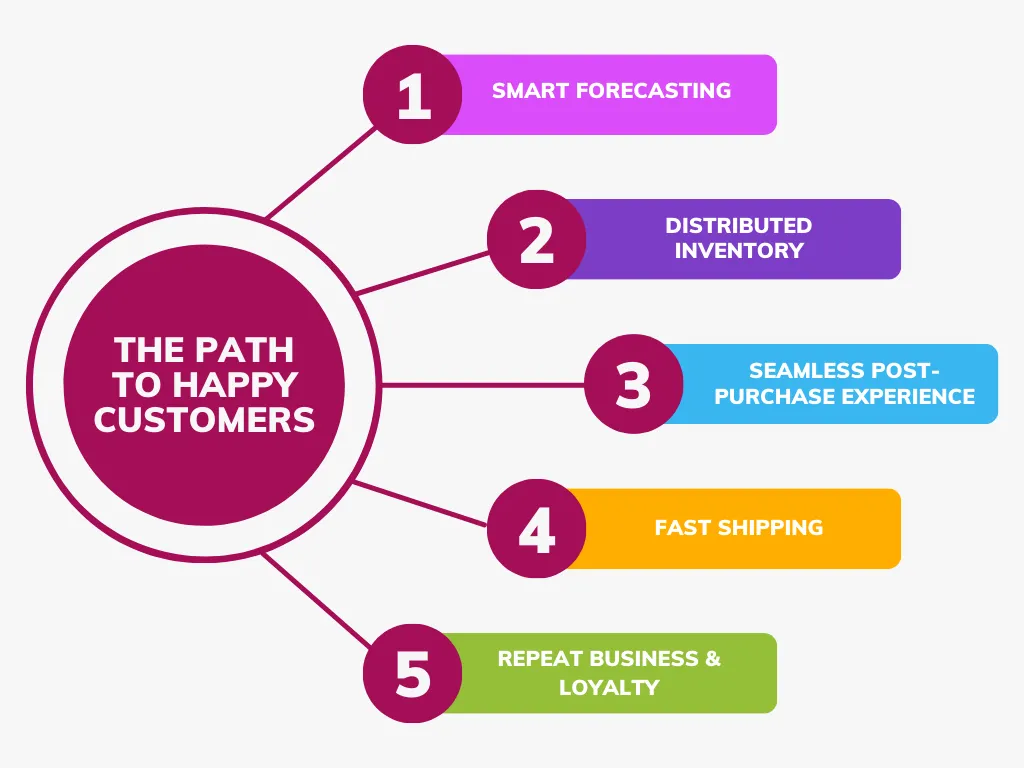Amazon vs Walmart: The E-commerce Battleground

They are the titans of modern retail - Amazon's e-commerce juggernaut against Walmart's burgeoning online offensive. Where should you focus your brand's selling efforts for maximum growth? Let's dive deep and explore the opportunities and challenges of each platform.
Size Matters: Reach Astronomical Customer Bases
Amazon:
300 million active customer accounts worldwide
Over 50% of U.S. households have Prime memberships
Customers flock there with purchase intent
Walmart:
120 million unique visitors per month to their website
5,000+ retail locations to merge online/in-store experiences
Growing fast with Walmart+ membership program
Combined, Amazon and Walmart command over 60% of U.S. e-commerce sales. The winner gets a massive piece of the $1 trillion pie.
Uplift your brand with our Mega-Platform Product Launch system to hit the ground running and dominate customer mindshare.
Fulfillment: Streamlined Operations for Scale
Amazon:
Powerful FBA (Fulfilled by Amazon) program
Seamless Prime 2-day delivery promises
High customer expectations consistently met
Walmart:
Rapidly scaling up fulfillment capabilities
Using massive physical store footprint
Free 2-day shipping without membership fees

88% of consumers are more likely to purchase again if their delivery timeline expectations were met.
Crush fulfillment challenges with our optimized Logistics Acceleration Blueprint to build a future-proof, omnichannel-ready supply chain.
Size Matters: Reach Astronomical Customer Bases
Amazon:
- Amazon Prime has over 200 million paid members globally as of 2022.
- Amazon accounts for around 38.7% of the U.S. e-commerce market as of 2022.
- Amazon's customer base spans across 20 core product categories.
Walmart:
- Walmart's e-commerce sales grew by 79% in the third quarter of 2022.
- Walmart+ has over 16 million paid members as of 2022.
- Walmart's online grocery service is available in over 3,500 stores across the U.S.
Fulfillment: Streamlined Operations for Scale
Amazon:
- Amazon has over 175 operational fulfillment centers worldwide.
- Amazon's FBA (Fulfilled by Amazon) service handles over 67% of all Amazon orders.
- Amazon Prime members in the U.S. spent an average of $3,000 per year on the platform in 2021.
Walmart:
- Walmart has over 40 dedicated ecommerce fulfillment centers across the U.S.
- Walmart's next-day delivery service covers over 75% of the U.S. population.
- Walmart's curbside pickup service is available at over 3,700 stores.
Discoverability: Win the Visibility Battle
- Over 60% of product searches on Amazon originate directly on the platform.
- Amazon's sponsored product ads account for around 30% of its advertising revenue.
- Walmart's advertising platform, Walmart Connect, saw a 48% increase in advertisers in 2022.
Reviews & Ratings
- Products with at least 5 reviews on Amazon have a 270% higher conversion rate.
- 88% of consumers trust online reviews as much as personal recommendations.
- Negative reviews can decrease a product's conversion rate by up to 59%.
Fees & Outlook: What's on the Horizon?
Amazon:
- Amazon's referral fees range from 6% to 45% depending on the product category.
- Amazon's FBA fees increased by an average of 4.3% in 2023.
- Amazon is investing heavily in expanding its logistics and fulfillment capabilities.
Walmart:
- Walmart's referral fees range from 6% to 20% across various categories.
- Walmart is actively courting third-party sellers with lower fees and incentives.
- Walmart is leveraging its physical store footprint to offer seamless omnichannel experiences.
These additional statistics, data points, and insights can help bolster the arguments and narratives presented in the article, providing readers with a more comprehensive understanding of the ecommerce battleground between Amazon and Walmart.
The e-commerce battleground between Amazon and Walmart is heating up, and the stakes have never been higher. As these retail titans continue to invest billions into expanding their reach, enhancing their logistics capabilities, and improving their platforms, brands, and sellers must adapt their strategies to thrive in this ever-evolving landscape.
According to a recent survey, 89% of consumers are more likely to buy from brands that offer seamless omnichannel experiences. With Walmart's vast physical store network and Amazon's unparalleled online dominance, both platforms are uniquely positioned to cater to this growing demand.
Moreover, the rise of influencer marketing and social commerce has opened up new avenues for product discoverability. In fact, social media platforms like Instagram, TikTok, and YouTube drive an estimated 28% of all e-commerce traffic, with this number expected to increase exponentially in the coming years.
As the competition between Amazon and Walmart intensifies, the winners will be the brands and sellers that can seamlessly navigate these platforms, leveraging their respective strengths and capitalizing on emerging trends.
Don't get left behind in this titanic ecommerce clash. Embrace the power of our Omnichannel Mastery Blueprint to unlock a comprehensive strategy that spans both Amazon and Walmart, while simultaneously tapping into the lucrative world of social commerce.
With our proven methodologies, you'll:
- Optimize your product listings for maximum visibility and conversion across both platforms.
- Implement a robust, data-driven advertising strategy to outmaneuver your competition.
- Streamline your logistics and fulfillment operations for lightning-fast, cost-effective delivery.
- Use influencer marketing and social commerce to amplify your brand's reach.
- Stay ahead of the curve with cutting-edge insights and continuous strategy refinements.
The e-commerce battle lines have been drawn. Choose your side, but don't go into battle alone. Our Omnichannel Mastery Blueprint will equip you with the weapons you need to conquer the e-commerce frontier and emerge victorious.
Claim your competitive edge today by scheduling a confidential strategy session with our e-commerce dominance experts.

